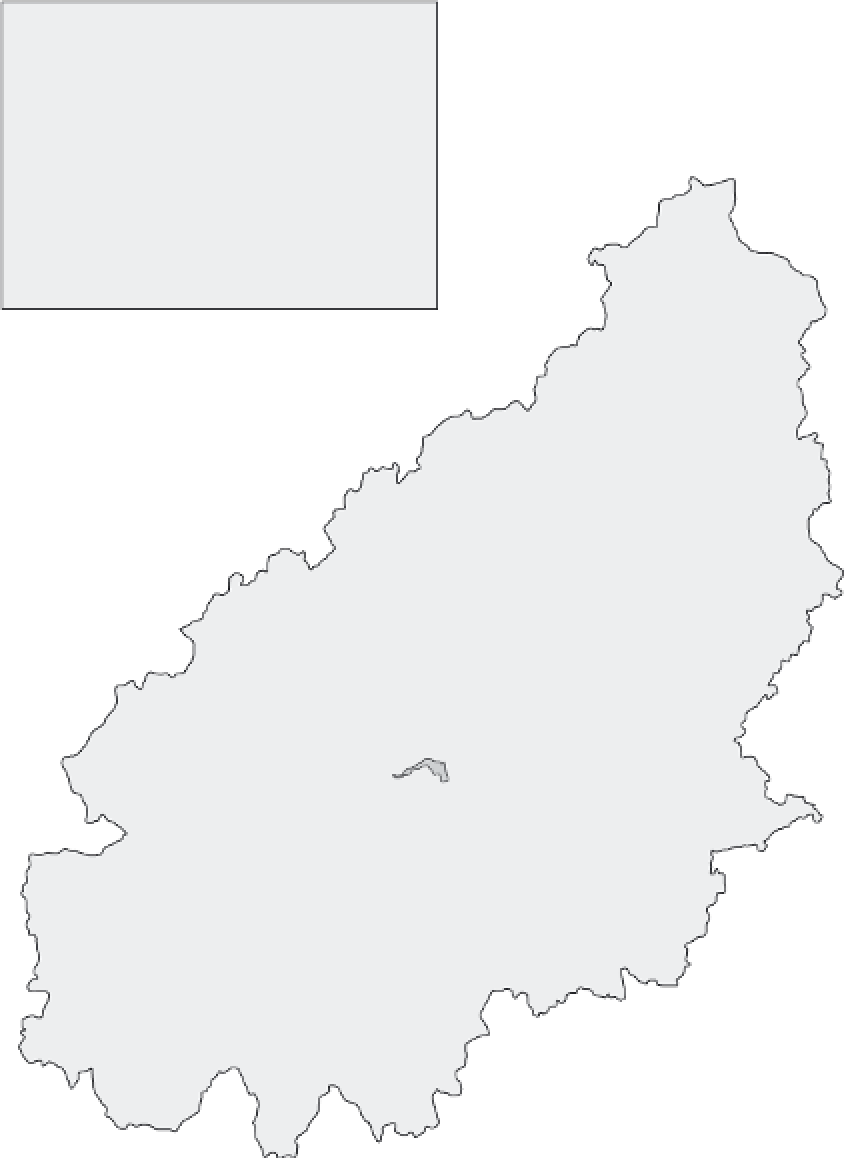Environmental Engineering Reference
In-Depth Information
Sudbury River
Watershed
Confluence of
Sudbury and Assabet
Rivers
Massachusetts
10
Walden
Pond
Fairhaven
Bay
9
Great Meadows
National Wildlife
Refuge
Sudbury River
Streams/River
Wetlands
Open water
Reach markers
8
Sudbury
Reservoir
7
Saxonville
Pond
6
Lake
Cochituate
Reservoir #3
5
495
9
4
Reservoir #1
Cedar Swamp
Pond
3
Reservoir #2
Sudbury River
2
1
Hopkinton
Reservoir
Whitehall
Reservoir
Ashland
Reservoir
90
Nyanza
Superfund Site
0
2
4 Miles
N
0
2
4 Kilometers
FIGURE 9.8
Map of the Sudbury River system in Massachusetts, showing study reaches in relation to the Nyanza chemical waste dump site, a
point source of mercury to the river. (
Source:
Map created by USEPA Region 1 by Bart Hoskins and Gordon Hamilton.)
recent measurements of sediment and fi sh tissues have shown
that this pattern has persisted for 10 years after the original
studies. Hg in fi sh tissue within the reservoirs (approximately
5 km from the Nyanza site) remains elevated, is lower in
the fl owing reaches downstream, and increases as the river
fl ows through the wetlands in the GMNWR 25 km from the
site (see Figure 9.9). Note there is a lack of direct correlation
between Hg in sediment and in fi sh tissues.
dynamic nature of contaminant fate in lotic systems. Just
as in the case of polychlorinated biphenyls (PCBs) in the
Hudson River, the transport of contaminant from a point
source can create new source regions downstream (Con-
nolly et al., 2000). In this case, the methylation in the wet-
land 25 km downstream of the Nyanza site is a new source
region for MeHg to sites further downstream. More-
over, burial of contaminated sediments in the reservoirs
upstream appear to be diminishing the Hg fl ux from those
originally contaminated sites, as evidenced by the reduc-
tions in MeHg bio-accumulated by resident fi sh.
An Environmental Risk Assessment has been conducted
based upon numerous water, sediment, avian, mammal,
TEMPORAL PATTERNS AND ECOLOGIC RISK
The temporal change in Hg bio-accumulation and tro-
phic transfer in the Sudbury River system illustrates the












































































































































































































































